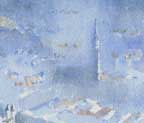

Heidelberg
Michael Kluckner
Return to main travel page Return to home page
|
On the way back to Frankfurt at the end of the Turkey-Greece trip in the middle of November, 2005, we stopped for a couple of days in Heidelberg, where I (age 20) had spent a week or so while travelling in 1971. At that time, Heidelberg was a popular spot on the hippie circuit, with bands of vagabonds camping on the north bank of the Neckar River near the Alte Brücke, the old bridge. I was curious to see the place again. I recall quite clearly pencil drawings I did in 1971, although I destroyed them in a fit of youthful angst several years later. |
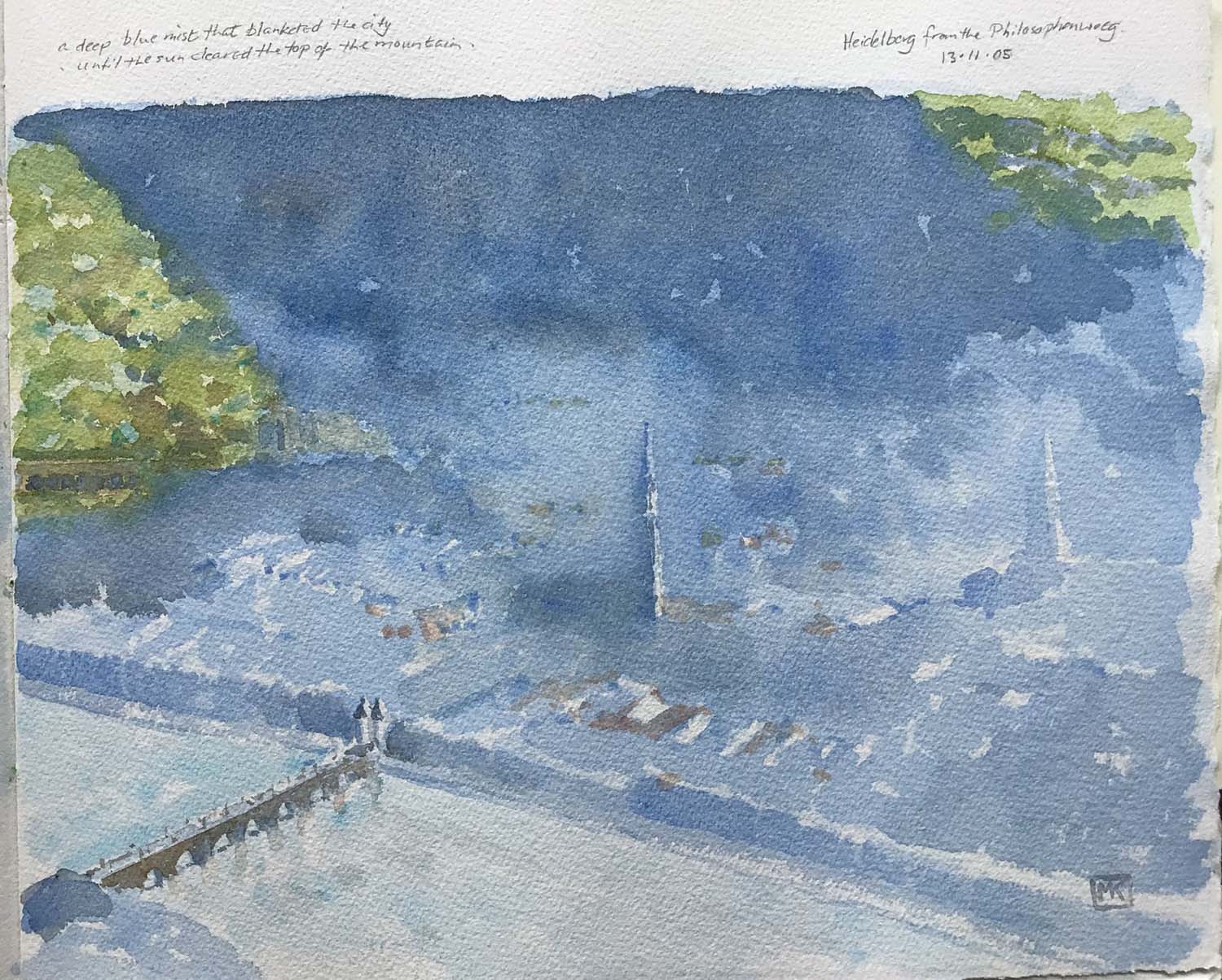
|
One of the morning rituals in this ancient university town is a walk on the Philosophenweg, the pathway on the wooded hillside across the river from the Altstadt (old town). On a Sunday morning in mid November, the sun barely clears the hillside to the south of the town, and only a couple of faces of the hillside get sun. The city is bathed in a deep blue mist, with the Schloss and hillside buildings hanging like ghostly shapes in space. The dominant building is the Heiliggeist-Kirche; the one on the right is the Jesuiten-Kirche. The Alte Brücke crosses the Neckar River in the foreground; it flows to the right (west) to the Rhine. |
|
Went to the Kunstverein on Heidelberg's Haupstrasse to look at the exhibitions there, and found postcards of the city from earlier generations of travelling painters. This "aquarell," c. 1850, by an "Unbekannter englischer Zeichner" (anonymous English artist?) is from a point on the Philosophenweg just upstream of the spot where I painted. It and the card below show the city stopping at about Bismarckplatz, the beginning of the sprawling modern city. One change to the city from my first visit 34 years ago: the Haupstrasse, which was a lively street of local shops with trams and cars on it, has been turned into a pedestrian mall, which has attracted the sort of international-brand stores like Benetton that are typical of every European city. Pity. The city is also cleaner and has fewer sex shops, which indicates progress. |
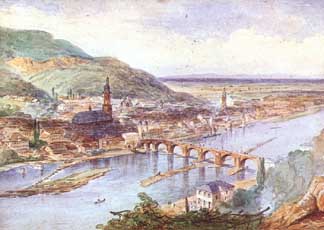 |
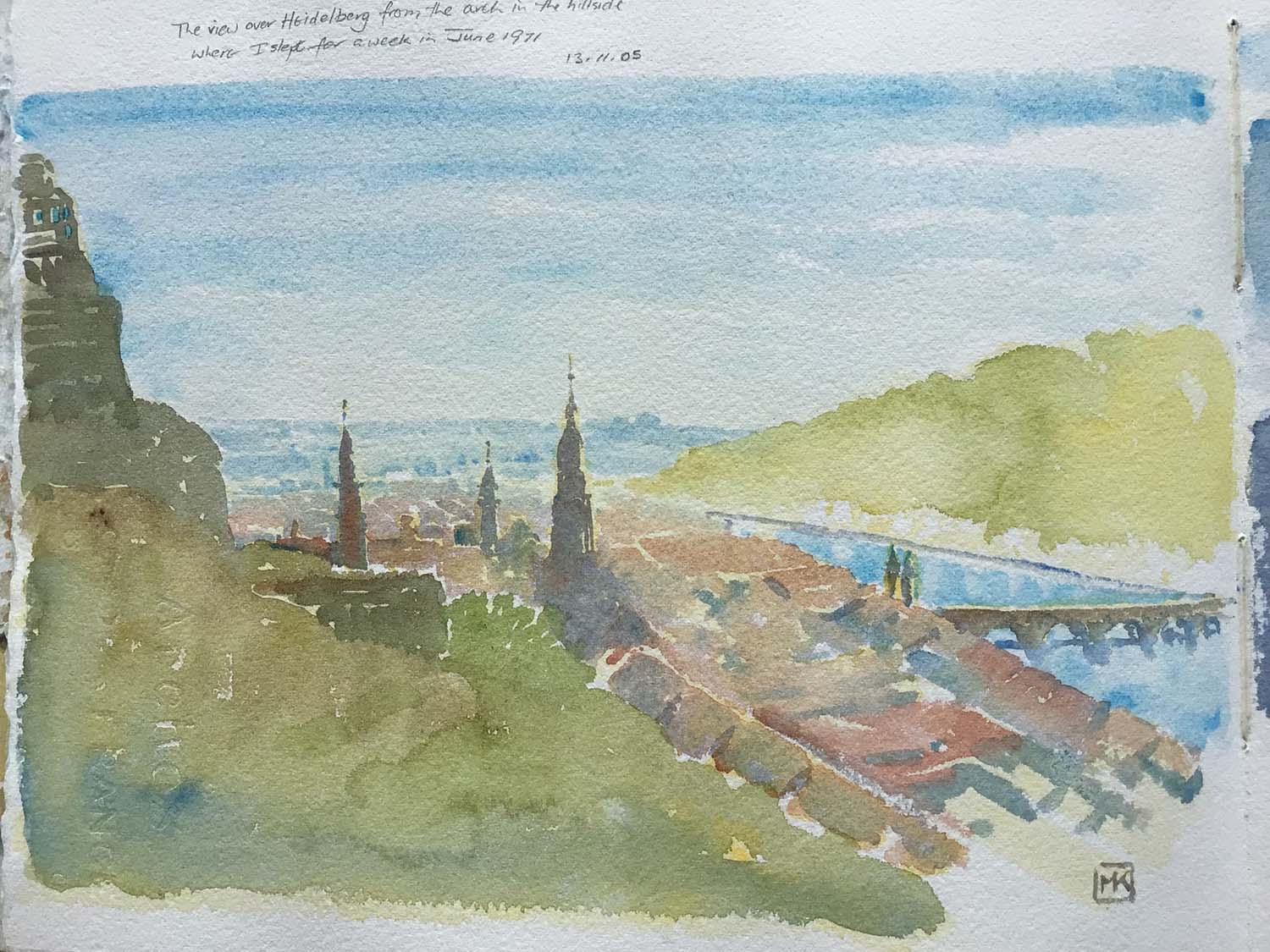
|
The view of Altstadt from the arches that support the Scheffelterrasse. I wanted to go back to this spot as I camped out in one of the arches on my hippie-rucksack tour many years ago. The bulk of the ruined castle looms on the left-hand side; the terrace above the arches is part of the Schlossgarten – a beautifully formal piece of landscape gardening. In 1971, there were hippie travellers sleeping all over the city. One thing I remember is sitting at the centre, the focal point, of "my arch", which acted like a parabolic dish, and hearing very clearly a concert that I knew was playing at the distant university. When I moved a few feet out of the arch, all I could hear was the hum of the city. At dawn every day, a security guard with an Alsatian strode by the arches, shouting "Raus! Raus! Ze tourists are comink!" -- our key to tidy up and move out for the day. But we were tolerated. |
Same view, 19th century, showing an arch and a view of the castle before it fell into ruin. "Schloss und Stadt von unterhalb der Schlossterrasse," a lithograph by F. Stroobant. |
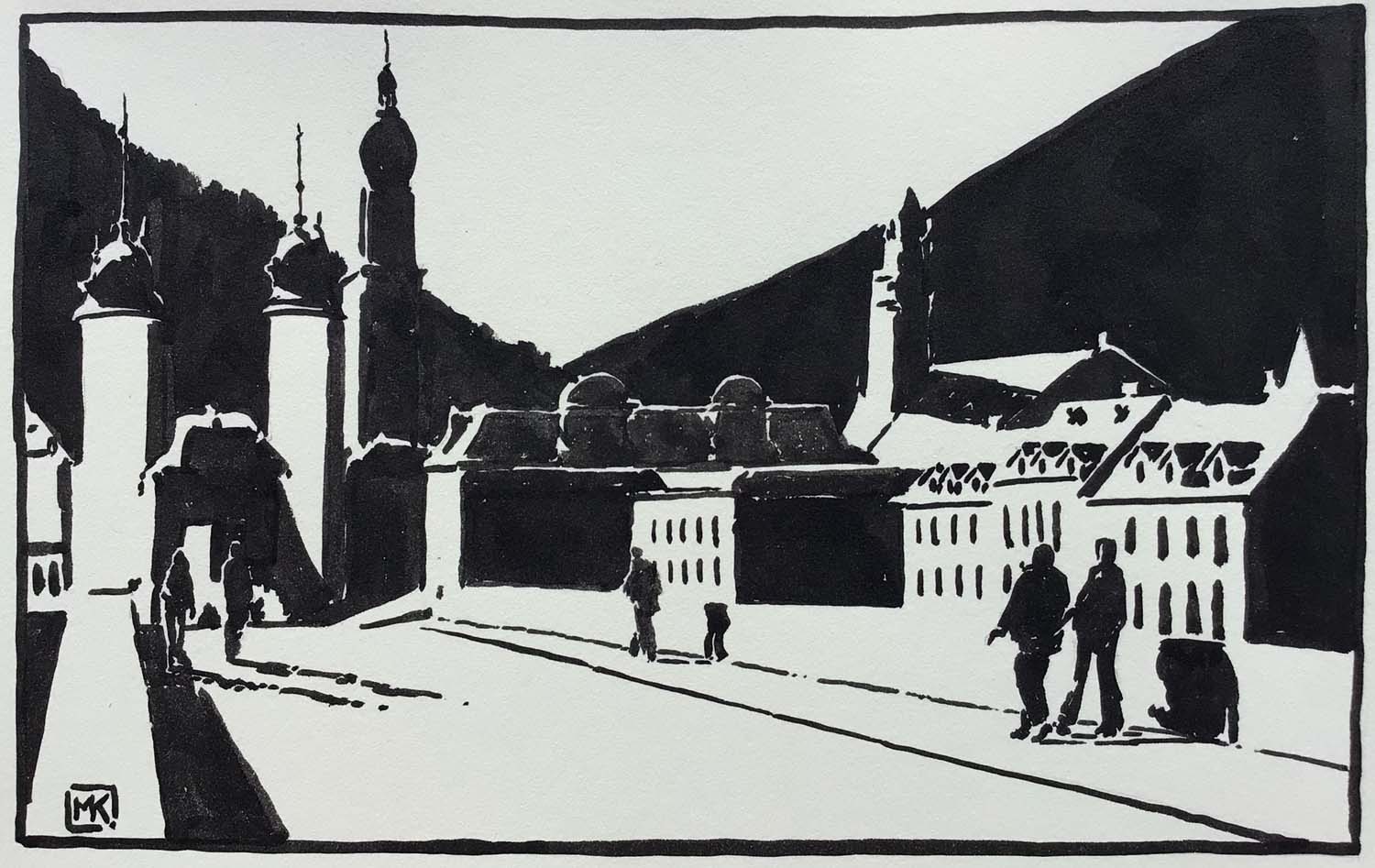
|
Above: an ink drawing in the style of a woodcut that I did
sometime later. J.M.W. Turner also stayed in Heidelberg, apparently at the Hirschgasse hotel at the lock just upstream from the Alte Brücke. The only painting I've seen from his time shows a view from the bank of the river, with a medley of people washing clothes, etc, and the city and castle looming in a weird white light in the background. A big oil – not one of his most successful pieces, in my humble opinion. Perhaps there are others that I will eventually see. |
